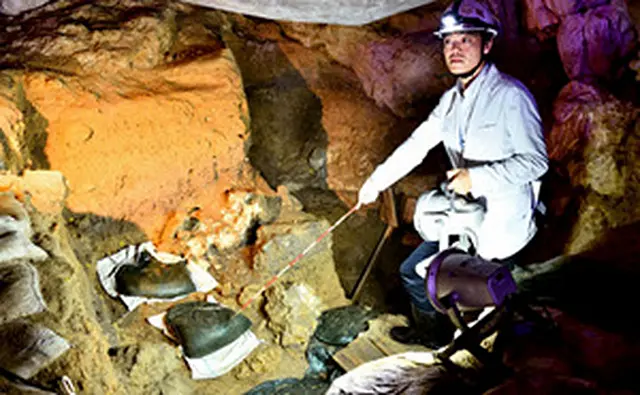A 23,000-year-old fishing hook, the world’s oldest, was excavated from a cave here, a discovery that counters the theory that early Stone Age humans could not survive for long on Japan’s southernmost islands, researchers said.
The 1.4-centimeter-wide hook, made from a type of Trochus snail seashell, was unearthed in the Sakitari Cave on the southern tip of Okinawa's main island in 2012. It is the first Paleolithic fishing tool found on Japanese soil, and it shows that human beings had acquired the skills to live on catches from the sea and rivers in the early Stone Age, researchers said.
The discovery was announced by the Okinawa Prefectural Museum and Art Museum in Naha on Sept. 19. A paper on the finding was published in the online edition of an academic journal, Proceedings of the National Academy of Sciences of the United States of America, on the same day.
According to Masaki Fujita, chief curator of the Okinawa Prefectural Museum, one widespread hypothesis is that Old Stone Age humans could not sustain themselves in the long term in the Okinawa region because of its limited sources of edible flora and fauna.
The fishing hook, however, shows that the early humans had found a way to hunt for food by developing a tool.
A research team from the Okinawa Prefectural Museum, which has been conducting excavations at the Sakitari Cave site since 2009, found layers of seashells and other sea creature remains that were apparently continuously deposited from 35,000 to 13,000 years ago. They showed signs of being heated over fire for consumption.
“It proves that human beings had constantly inhabited in the area,” Fujita said.
The team has also found extensive deposits of marine scraps, including fish bones, crab shells and seashells. The cave also contained skeletal remains of a human infant dating back around 30,000 years.
The hook was found about a meter deep in soil in a corner of the prehistoric cave. Carbon dating on a sample of charcoal found in the same layer showed it was 23,000 years old.
According to museum officials, the fishermen likely removed the base of the conical shell, and then filed the separated piece with stones or other instruments to form a hook. Some type of string was attached to the hook and used to catch fish, they said.
The National Museum of Nature and Science and the University Museum, the University of Tokyo, helped to analyze the specimens.
(THE ASAHI SHIMBUN)
 简体中文
简体中文

